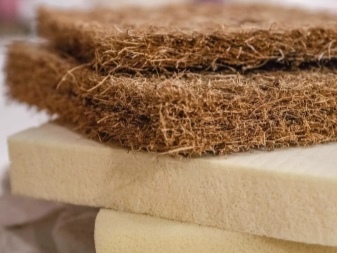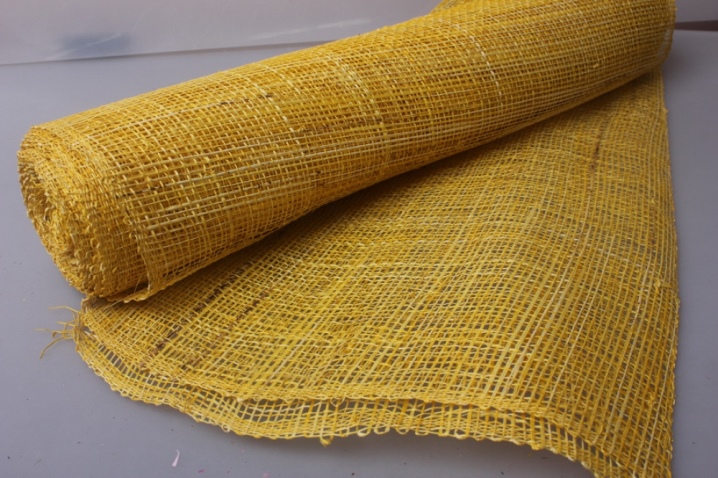All About Manila Hemp

The industrial uses of banana fibers may seem insignificant when compared to popular materials such as silk and cotton. Recently, however, the commercial value of such raw materials has increased. Today it is used all over the world for a variety of purposes - from the production of packaging containers to the creation of clothing and sanitary napkins.


What it is?
Banana fiber is also known as abaca, manila hemp and coir. These are all different names for the same raw material obtained from the Musa textilis plant - the textile banana. It is a herbaceous perennial from the banana family. The world's largest suppliers of this fiber are Indonesia, Costa Rica, the Philippines, Kenya, Ecuador, and Guinea.
Banana coir is a coarse, slightly woody fiber. It can be sandy or light brown.
In terms of its physical and operational characteristics, the abacus is something between a delicate sisal and a tough coconut coir. The material is classified as semi-rigid fillers.
Compared to coconut fiber, manila is more durable, but at the same time elastic.


The pluses of abacus include:
-
tensile strength;
-
elasticity;
-
breathability;
-
wear resistance;
-
moisture resistance.
Manila hemp has the ability to quickly give up all the accumulated water, therefore it is highly resistant to decay. Latex materials additionally have spring properties.
Manila fiber is known to be 70% stronger than hemp fiber. At the same time, it is a quarter lighter in weight, but much less flexible.

How is fiber harvested?
Smooth, strong material with a slightly noticeable gloss is obtained from leafy sheaths - this is a fragment of a sheet in the form of a groove near the base, wrapping around a section of the stem. The expanded leaf sheaths of a banana are arranged in a spiral and form a false trunk. The fibrous part matures within 1.5-2 years. Three-year-old plants are usually used for cutting. The trunks are cut completely "under the stump", leaving only 10-12 cm in height from the ground.
After that, the leaves are separated - their fibers are clean, they are used to make paper. The cuttings are more fleshy and watery, they are cut and cut into separate strips, after which bundles of long fibers are separated by hand or with a knife.
Depending on the grade, the resulting raw materials are divided into groups - thick, medium and thin, after which they are left to dry in the open air.


For reference: from one hectare of cut abacus, from 250 to 800 kg of fiber is obtained. In this case, the length of the filaments can vary from 1 to 5 m. On average, about 3500 plants are needed to obtain 1 ton of fibrous matter. All work on getting Manila hemp is done strictly by hand. In one day, each worker processes about 10-12 kg of raw materials, thus, in a year he can harvest up to 1.5 tons of fiber.
The dried material is packed in 400 kg bales and sent to the shops. For the manufacture of mattress fillers, the fibers can be bonded together by needling or latexing.


Overview of varieties
There are three varieties of Manila hemp.
Tupoz
This abacus is of the highest quality and is distinguished by its yellow color. Fibers are thin, up to 1-2 m long. This hemp is obtained from the side of the inside of a banana stem.
The material is widely in demand in the manufacture of upholstery and carpets.

Lupis
Medium quality hemp, yellowish brown in color. The thickness of the fibers is average, the length reaches 4.5 m. The raw material is extracted from the lateral part of the stem. Used to make coconut bastards.

Bandala
Hemp is of the lowest quality and can be distinguished by its dark shade. The fiber is rather coarse and thick, the length of the filaments reaches 7 m. It is extracted from the outside of the leaf.
Cords, ropes, ropes and mats are made from such hemp. It goes into the production of wicker furniture and paper.

Areas of use
Manila hemp has become widespread in navigation and shipbuilding. This is not surprising, because the ropes made from it are almost not exposed to the negative effects of salt water. For a long time they retain their high performance characteristics, and when they become obsolete, they are sent for processing. Paper is made from recycled materials - even an insignificant content of Manila fiber in the raw material gives it a special strength and strength. This paper is used for winding cables and making packaging material. The material was especially widespread in the USA and England.
Banana hemp, unlike hemp, cannot be used to make fine yarn. But it is often used to make rough materials. These days, the abacus is considered a rather exotic material. That is why interior designers often use it when decorating rooms and making furniture. Due to its environmental friendliness, resistance to moisture and other external unfavorable factors, the material is widely in demand in European countries. Hemp looks harmoniously in the decor of country houses, loggias, balconies and terraces. Such items are especially popular in rooms, made in country style, as well as in a colonial style.


For more than seven centuries in Japan, manila fibers have been used in the textile industry to create clothing. The threads extracted from the abaca are well colored and do not have a pronounced odor. In addition, they do not fade in the sun, do not shrink under the influence of hot water, and even after repeated washing cycles, retain all their characteristics. Tough fabrics are made from Manila hemp. They can be made entirely of Manila fibers, or 40% cotton is added to them.
Banana fabric is considered a natural sorbent. Thanks to this, the skin breathes, and even on the hottest days the body feels cool and comfortable. Abacus fabric is water-, fire- and heat-resistant, it has pronounced hypoallergenic properties.
These days, this fiber can be a good alternative to most synthetic and natural fibers.








The comment was sent successfully.